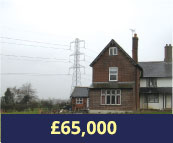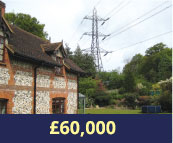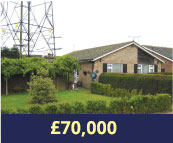Public infrastructure vs property owners: five main culprits devaluing your home

Public works and infrastructure, like train lines, airports, main roads and utility plants, can in many ways be very convenient for property owners who live close by. Unfortunately, for every advantage these offer, there’s a number of significant drawbacks.
Noise pollution, visual ‘blots on the landscape’, and even forced relocation are some of the risks property owners in close proximity to this infrastructure face. Here are some of the major culprits when it comes to devaluing the market value of your property.
1. Train lines
Whether you’re living in the city or the country, train lines are a major cause of property devaluation. Constant noise pollution, potentially busy road traffic and spoiled views make for a dangerous cocktail in regards to property value.
Much has been made of the threat new train lines pose to the property market, particularly the government’s controversial HS2 proposals. Not only are local property owners close to the proposed line forced to face major noise pollution from what will be the loudest high-speed train to ever run in Britain, but many in the path of the proposed line are being displaced and forced to leave their homes.
While the government is offering seemingly generous compensation for those forced to relocate, the reality is that the delays in the project have left many homeowners uncertain as property values have changed since the line was first proposed – and for the vast majority of those affected, the government is yet to value their homes.
2. Power lines and pylons
Large overground pylons can massively depreciate the value of any properties, either in the direct path or surrounding area of the powerlines. This is because they are a source of visual intrusion, possible health risks and noise pollution. The same applies for many underground power lines. With losses ranging between 1% and 25% depending on the amount of apparatus crossing the property, they pose a major threat to all relevant properties.
Thankfully, many of said property owners are legally entitled to compensation from the respective electricity companies for any and all possible losses. Furthermore, in some cases legal action can make it possible for owners of development land to get power lines relocated or removed.
3. Main roads
Main or busy roads are a major culprit when it comes to driving down property values. This is primarily due to the noise pollution generated, hence why many main roads are heavily tree-lined. This is not the case everywhere though. While it is convenient to turn straight off of a B road into your driveway, it’s not so convenient to be shortchanged during a property sale.
Thankfully, busy roads are nowhere near as much of a problem for property prices as they once were. CEO of eMoov.co.uk, Russell Quirk, attributes this to high demand and an increasing willingness to compromise when it comes to buying a home.
4. Utility plants
Living in close proximity to a public utility plant is not only unpleasant (as many people living near sewage plants will tell you), but it also drastically drives down the market value of your home. Unfortunately, unless it’s a new development, it’s very hard to claim compensation for this. Whether it’s a power plant, a recycling center, a landfill or a water treatment plant, utility plants are a major source of property depreciation.
5. Airports and flight paths
While living near an airport can be very convenient when it comes to holidaymaking, it’s not so great when it comes to selling property for the right price. One of the key controversies surrounding the new Heathrow runway, for example, is that it will devalue the local housing market by ‘millions’ of pounds.
Constant noise pollution, as well as poor air quality and potential risk to the structural integrity of homes, means airport expansions are perhaps some of the worst things that could happen to property values. As one commentator points out, those living in the development area for the new runway have no legal recourse or ability to claim compensation until at least one year after the completion of the project – while having to live with the consequences for its duration.









